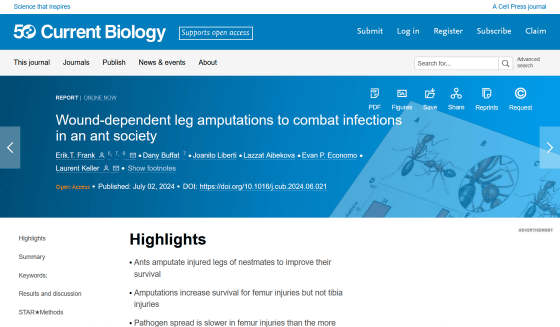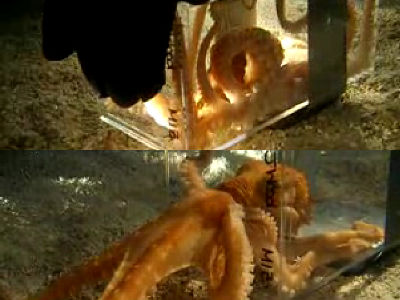Ants perform leg amputation to save injured friend's life

Humans perform advanced surgery to treat illnesses and injuries, and sometimes amputate damaged parts to save lives. A new international research team has discovered that
Wound-dependent leg amputations to combat infections in an ant society: Current Biology
https://www.cell.com/current-biology/fulltext/S0960-9822(24)00805-4

An ant that selectively amputates the infection | EurekAlert!
https://www.eurekalert.org/news-releases/1049744
Ants perform life-saving operations — the only animal other than humans known to do so | Live Science
https://www.livescience.com/animals/insects/ants-perform-life-saving-operations-the-only-animal-other-than-humans-known-to-do-so
Injuries pose a serious risk of infection to animals, including ants, and if left untreated, they can die from infection. In a 2023 study , Eric Frank , a behavioral ecologist at the University of Würzburg in Germany, discovered that an ant called Megaponera analis , found in Africa, treats pathogen-infected companions with antibacterial substances secreted from special glands.
Next, Frank and his team investigated how Florida carpenter ants, which do not have glands that secrete antibiotics, help their fellow colonies. In their experiments, they prepared ants with wounds in their femurs and tibias and observed how fellow ants treated the wounds.
As a result of the experiment, it was observed that the ants with injured femurs cleaned the wound with their mouthparts and then performed a 'surgery' by repeatedly biting the leg to amputate it. On the other hand, the ants with injured tibias were not amputated, but only had the wound cleaned.
Below is a picture of an ant treating a friend.

By Danny Buffat
The team also found that these treatments significantly increased the survival rate of the injured ants. In the case of ants with femoral injuries, the survival rate was less than 40% without treatment, but amputation improved that to 90-95%. In contrast, in ants with tibia injuries, the survival rate was only about 15% if left untreated, but cleaning the wound increased the survival rate to 75%.
The research team believes that the reason why Florida carpenter ants perform amputation surgery on injured femurs while only cleaning the wounds of injured tibias is due to the time it takes to perform amputation surgery.
When the research team performed micro-CT scans of Florida carpenter ants, they found that the femur is mostly composed of muscle tissue and has the functional role of pumping blood (
It takes at least 40 minutes for an ant to bite and amputate another ant's leg, so if the pathogen that entered through the wound circulates through the body in the hemolymph too quickly, amputation surgery will not be enough. Therefore, the research team believes that ants with injured femurs and reduced pathogen circulation rates undergo amputation surgery, while ants with injured tibias and no change in pathogen circulation rates undergo wound cleaning.

'When it comes to amputation behaviour, this is literally the only case in the animal kingdom where advanced and sophisticated amputation is performed by another individual,' Frank said. 'The fact that the ants can diagnose the wound, determine whether it's infected or sterile, and then treat it accordingly over a long period of time - the only medical system that could compare to this is ours.'
Related Posts:







